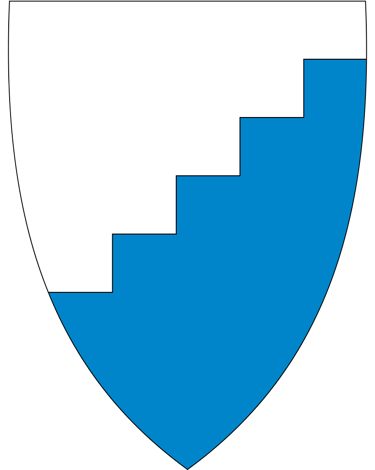Coming Soon


Nome Kommune
Pop. 6,557; Area 389 sq. km. (150 sq. mi.)
Nome is a fairly new kommune, created when the independent towns of Holla and Lunde were joined together. The coat of arms, in blue and silver, is divided by steps, representing the Telemark Canal that runs through the kommune. The administrative center is Ulefoss.
The Agricultural College of Telemark has its campus at Søve on the Norsjø just south of Ulefoss. Although there is industry in both Ulefoss and Lunde, forestry is also of prime importance for the township. The Aall and Cappelen families are the leading forest owners.
Lunde is a small village and railway station on the Southern Line. A brickworks is established here. This is a convenient place to go ashore from the "Victoria" since one of the locks on the Bandak Canal is in Lunde. This is the furthest point to which you can travel on the Canal and still get back to your starting place on the same day.
Ulefoss is an old industrial town on the Norsjø where the first lock system of the Bandak Canal was built. Industry started here as early as 1657 with the opening o as early as 1657 with the opening of the Ulefoss Iron Works. The town is strongly marked by the presence of the Cappelen and Aall families. The Ulefoss Manor, home of the Aall family, overlooks the town on a high ridge north of the river. It has been characterized as "the chief masterpiece of Norwegian empire style." The Nome Tourist Information Office lies next to the locks at Ulefoss. Historical exhibitions about the Telemark Canal are set up here every summer. Little Ulefos was formerly the dowager house to Ulefoss Manor. Now it is a cultural center for applied art and a multitude of other activities ranging from concerts, exhibitions, and lectures to the production of printed leather-wearing apparel. The main building and park of Holden Manor, home of the Cappelen family, have been declared historic monuments. Picturesque old workers' quarters on the other side of the highway are also historic monuments. The Fen Field is famous among geologists for its rare minerals and earth types.
Sites to See
The old Helgen Church was a stave church, possibly built around 1200. It was torn down because it was rotten, and a new church was built on the same site in 1735. This church was rebuilt in 1865 as the white-painted wooden long church we see today.
Romnes Church, "Rumanes Kirkja" in ancient times, is a Romanesque stone church built in the first part of 1200. It lies just north of Ulefoss on the shore of the Norsjø. The church's interior is especially interesting. The church was acquired by the Aall family in 1864.
Old Holla or Holden Church was also a medieval stone church, situated near the Holla gård – the biggest farm in Telemark. The church had a fantastic view over the Norsjø. Today only the ruins is left, but is still a picturesque place to see.
Vrangfoss lock system can be reached on a side road from Highway 359 between Ulefoss and Lunde. The lock system is the largest in the Telemark Canals with 6 lock chambers and a total lift of 15 meters. A park surrounds the locks on either side. Many of the Canal Company's characteristic buildings are located in this park.
Flåbygd Church is a cruciform church with a log construction. It was built in 1822 and imitated the design of the Kongsberg Church and the old Skien Church. A medieval bell in the tower is inscribed "Sanctus Olavus rex noster" or Saint Olav our King.


Bygdebok for Nome
Iginga. Tidsskrift for Holla historielag. Red. Tormod Halvorsen m. fl. Udtg. Holla historielag. 1986
